Related Research Articles

Gewürztraminer is an aromatic wine grape variety, used in white wines, and which performs best in cooler climates. In English, it is sometimes referred to colloquially as Gewürz. In English and French it is usually written Gewurztraminer. Gewürztraminer is a variety with a pink to red skin colour, which makes it a "white wine grape" as opposed to the blue to black-skinned varieties commonly referred to as "red wine grapes". The variety has high natural sugar and the wines are white and usually off-dry, with a flamboyant bouquet of lychees. Indeed, Gewürztraminer and lychees share the same aroma compounds. Dry Gewürztraminers may also have aromas of roses, passion fruit and floral notes. It is not uncommon to notice some spritz.

Gouais blanc or Weißer Heunisch is a white grape variety that is seldom grown today but is important as the ancestor of many traditional French and German grape varieties. The name Gouais derives from the old French adjective ‘gou’, a term of derision befitting its traditional status as the grape of the peasants. Likewise, the German name Weißer Heunisch labels it as one of the lesser "Hunnic" grapes.
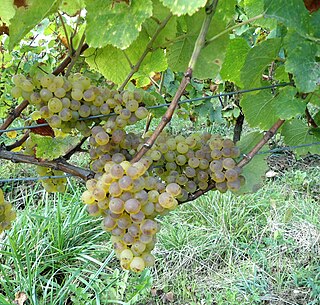
Savagnin or Savagnin blanc is a variety of white wine grape with green-skinned berries. It is mostly grown in the Jura region of France, where it is made into Savagnin wine or the famous vin jaune and vin de paille.
Romorantin is a traditional French variety of white wine grape, that is a sibling of Chardonnay. Once quite widely grown in the Loire, it has now only seen in the Cour-Cheverny. It produces intense, minerally wines somewhat reminiscent of Chablis.
Klevner or Clevner is a synonym for various grape varieties and wines, and is primarily used in German-speaking wine regions. The word derives from the Swiss version of the name of the Northern Italian town Chiavenna, Kleven, situated at the north end of Lake Como. Swiss mercenaries brought grapevines from that region back home across the Alps at the beginning of the 16th Century.
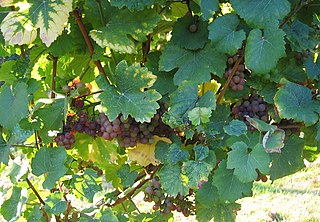
Savagnin rose or Roter Traminer is a variety of wine grape. It has a pink, reddish or brownish red skin colour, but is counted as a white wine grape since it does not have the deep purple/blue/black colour of red wine grapes.
Meslier Petit is a rare white wine grape that is a minor component of some Champagne blends. It is valued for its ability to retain acidity even in hot vintages. In the very rare cases where it is not blended, it makes crisp wines tasting of apples. The Traminer family of grapes can be difficult to grow, with poor disease resistance and low yields.
Bachet noir is a traditional French variety of red wine grape that is a sibling of Chardonnay. A little is still grown in the Aube, where it is used to add colour and body to Gamay wines.

Beaunoir is a traditional French variety of red wine grape that is a sibling of Chardonnay. The 'beautiful black' grape produces a thin wine and not much is grown these days.
Franc Noir de la Haute-Saône is a traditional French variety of red wine grape that is a sibling of Chardonnay. It makes thin, tart wine and has largely disappeared from cultivation.
Gamay Blanc Gloriod is an obscure French variety of white wine grape. Very little of it is grown commercially.
Knipperlé is a traditional French variety of white wine grape from Alsace. It's not listed for use in AOC wine, but is a minor component of blends for local drinking, in some ways an Alsatian equivalent of its sibling Aligoté in Burgundy.

Peurion is a traditional French variety of white wine grape that is a sibling of Chardonnay. Once quite popular, not much is still grown in France these days.
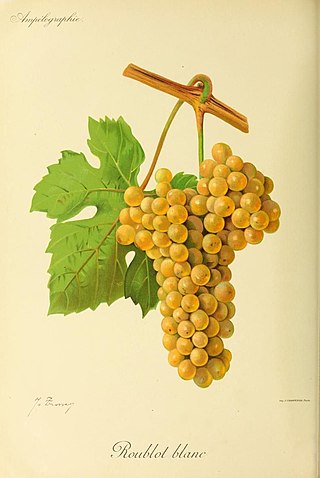
Roublot is a traditional French variety of white wine grape that is a sibling of Chardonnay. It was once quite widely grown near Auxerre.
Dameron is a traditional French variety of red wine grape that is a sibling of Gamay. Its wines are somewhat weightier than Gamay, but it is disappearing from its traditional areas in northern France. Not much is grown in France these days.
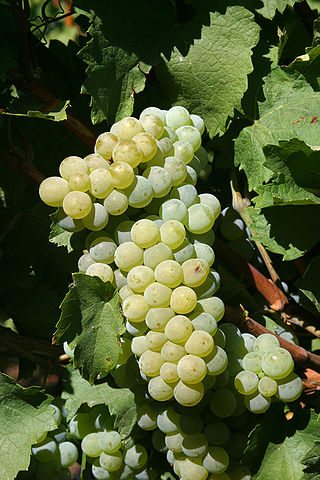
Elbling is a variety of white grape which today is primarily grown in the upstream parts of the Mosel region in Germany and in Luxembourg, where the river is called Moselle. The variety has a long history, and used to cover much of Germany's vineyards from medieval times and was that country's most cultivated variety until the early 20th century, but has been in decline ever since. As of 2006, there were 583 hectares of Elbling vineyards in Germany, which made it the country's 23rd most grown variety of grape. Of that vineyard surface, 575 ha or 98.6% was found in the Mosel region In the same year, there were 122.9 hectares of Elbling grown in Luxembourg.

Klevener de Heiligenstein, also known in English by its German name, Heiligensteiner Klevener, is a designation used on Alsace wine made from pink-skinned Savagnin rose grapes, a variety in the Traminer family, but which is less aromatic than Gewürztraminer, which is widely planted in Alsace. The designation may be allowed for selected vineyards in the villages Bourgheim, Gertwiller, Goxwiller, Heiligenstein and Obernai but, under current appellation rules, the designation may be used until 2021 for specified existing vineyards outside the designation area. Since Savagnin rose is not a permitted variety for other Alsace wines, its replanting outside this area is not allowed.
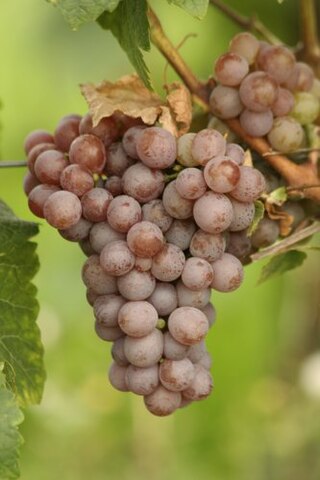
Musqué is a French term applied to certain varieties or clones of grapes used for making wine. The term means both perfumed ("musky") and Muscat-like, and indicates that the variety or clone is highly aromatic. The term musqué is usually suffixed to the name of certain grape varieties to indicate a clone with musqué properties, e.g. "Chardonnay musqué" or "Sauvignon blanc musqué". Such clones have arisen through mutation of a regular ("non-musqué") clone of the variety, and such mutations have been recorded for several different grape varieties.
Aubin vert is a white French wine grape variety that is grown in the Lorraine region where it is an authorized variety for the Appellation d'Origine Contrôlée (AOC) wines of the Moselle. While often confused for the Côtes de Toul grape Aubin blanc, DNA analysis in 1999 showed that Aubin vert was the result of a crossing of Gouais blanc with Pinot. This makes the grape a half-sibling to Aubin blanc but full sibling to Chardonnay, Aligoté, Gamay and Melon de Bourgogne.

Gouget noir is a red French wine grape variety that is grown in the Allier and Cher departments of central France. The grape was once widely planted with almost 17,000 hectares in the mid-19th century but the phylloxera epidemic greatly diminished it numbers and as of 2008 there was just 10 hectares of the grape planted in France.
References
- ↑ Maul, E.; Eibach, R. (June 1999). "Vitis International Variety Catalogue". Information and Coordination Centre for Biological Diversity (IBV) of the Federal Agency for Agriculture and Food (BLE), Deichmanns Aue 29, 53179 Bonn, Germany. Archived from the original on 12 August 2007. Retrieved 2007-07-26.